In the era of binary optical transmission, transmission speeds were comparatively slower, and certain technical challenges were less complex. An illustration of a straightforward heuristic was the guideline that the required bandwidth (in GHz) for proper signal transmission through an amplifier is obtained by dividing the NRZ signal speed (in Gbps) by √(2). This rule may have been overly simplistic and not applicable to PAM4 (in particular not with the addition of pre-emphases and post-equalization) but it may be worth to have a look at this question again:
“How much amplifier bandwidth is actually required?”
To get closer to an answer we compare two SHF amplifiers:
- The SHF M827 B with a bandwidth of 70 GHz and
- The SHF T850 C with a bandwidth of 100 GHz.
These two amplifiers are fed with signals at three different data rates and with four different signal sources:
- A relatively slow source without pre-emphasis
- A relatively slow source with pre-emphasis
- A fast source without pre-emphasis
- A fast source with pre-emphasis
a) Relatively Slow Souce without Pre-Emphasis
To start, we input a signal to the two amplifiers originating from a source possessing a bandwidth of roughly 50 GHz. This bandwidth is notably smaller than the individual bandwidths of the amplifiers. In addition, it aligns with the operational speed of the SHF 616 C PAM-MUX. It might be presumed that the amplifiers’ speed is not of critical consequence, given that the signal source constitutes the weakest (or, more precisely, the slowest) component within this signal chain. The output signals from the two amplifiers, under varying signal speeds, are presented below.
| 100 Gbps (50 GBaud) | 200 Gbps (100 GBaud) | 300 Gbps (150 GBaud) | |
| SHF M827 B | 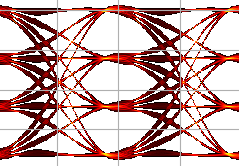 |
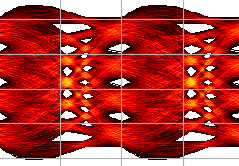 |
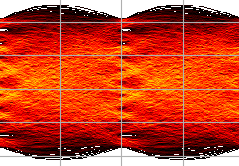 |
| SHF T850 C | 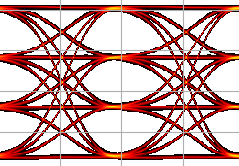 |
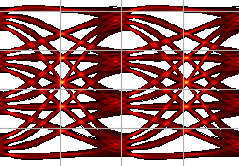 |
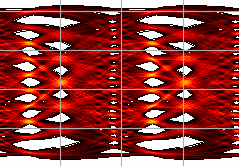 |
In contrast to above assumption, we do actually observe that the additional bandwidth of the SHF T850 C is influential across all baud rates, despite the signal source having a smaller bandwidth than both amplifiers. Regardless of the speed, the output signal from the SHF T850 C demonstrates significant better results. Additionally, it is probably evident that, under these specific driving conditions, a data rate of 300 Gbps might be excessively fast for most applications.
b) Relatively Slow Source With Pre-Emphasis
| 100 Gbps (50 GBaud) | 200 Gbps (100 GBaud) | 300 Gbps (150 GBaud) | |
| SHF M827 B | 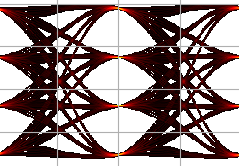 |
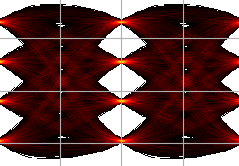 |
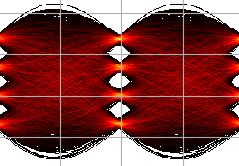 |
| SHF T850 C | 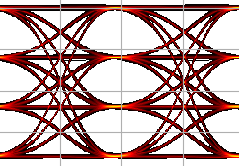 |
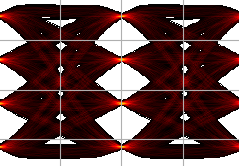 |
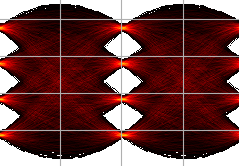 |
Beyond observing the impact of pre-emphasis itself, we also still note the significance of bandwidth (although the bandwith impact is smaller than in the case above). Despite applying more pre-emphasis to the slower amplifier than to the faster one, the pre-emphasis cannot fully compensate the bandwidth disparity between the two amplifiers.
c) Fast Source Without Pre-Emphasis
| 100 Gbps (50 GBaud) | 200 Gbps (100 GBaud) | 300 Gbps (150 GBaud) | |
| SHF M827 B | 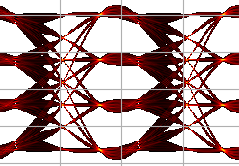 |
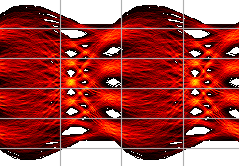 |
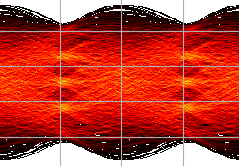 |
| SHF T850 C | 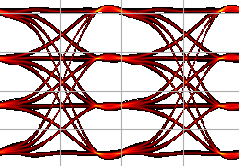 |
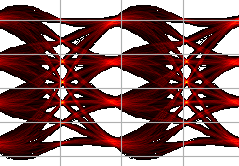 |
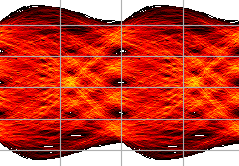 |
With the signal source no longer constituting the weakest component in the signal chain, the anticipated outcome becomes increasingly evident. The higher the bandwidth, the more favorable the result.
d) Fast Source With Pre-Emphasis
| 100 Gbps (50 GBaud) | 200 Gbps (100 GBaud) | 300 Gbps (150 GBaud) | |
| SHF M827 B | 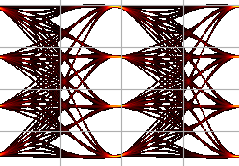 |
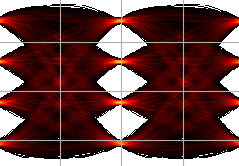 |
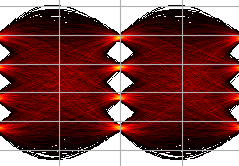 |
| SHF T850 C | 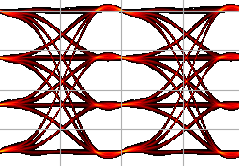 |
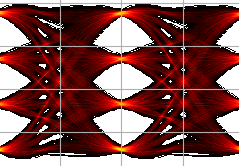 |
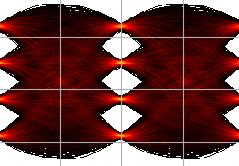 |
e) How does this Compare to Reality
| 256 Gbps (128 GBaud) | 280 Gbps (140 GBaud) | 320 Gbps (160 GBaud) | |
| SHF T850 C Simulation |
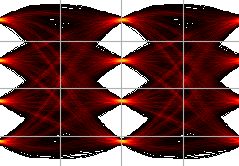 |
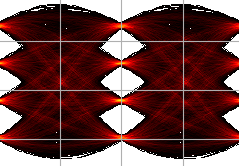 |
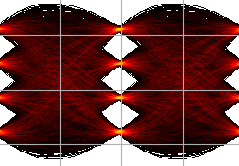 |
| SHF T850 C Measured |
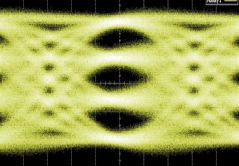 |
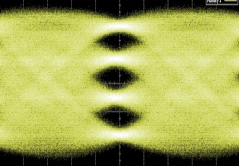 |
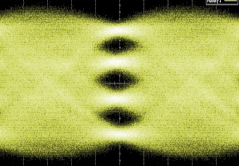 |
Despite variations in the specific algorithms employed to derive the optimal tap values and thus despite differenes in the pre-emphasis itself, a notable alignment is observed between the simulated and measured results. In either case, it is evident once more that the SHF T850 C amplifier performs well even at speeds surpassing 300 Gbps.
f) Summary
In summary, for this experiment, the assertion holds:
“the more bandwidth, the better!”
While this straightforward statement holds merit, it is crucial to acknowledge that in practical applications, bandwidth often involves trade-offs with other parameters not explicitly addressed in these simulations. For instance, an amplifier with greater bandwidth may introduce more noise, has less gain, or exhibits lower (linear) output power compared to one with a narrower bandwidth. Therefore, selecting the optimal amplifier requires careful consideration of multiple factors. Our seasoned SHF sales and support engineers are well-equipped to assist with this complex decision-making process.

